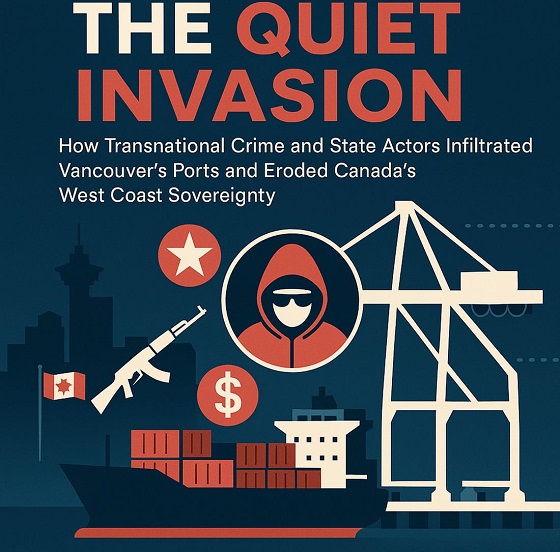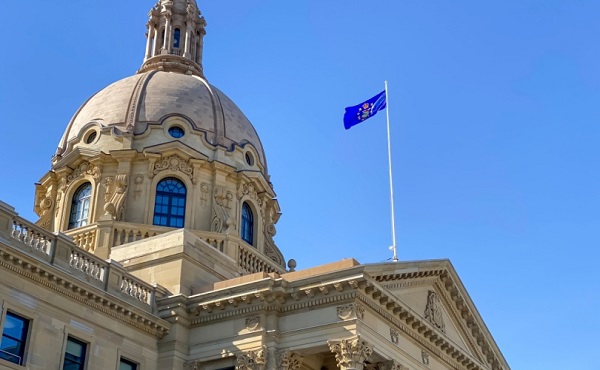Economy
Natural gas key to withstanding winter and Ottawa’s assault

From the Fraser Institute
Mother Nature has reminded everyone that the stakes in the battle to preserve and expand Alberta’s natural gas power production are very high—basically, life or death.
Last week’s polar vortex drove temperatures into record negative territory across western Canada. Nighttime temperatures in Alberta, for example, reached -51 degrees Celsius at Keg River. Without sufficient power for running the heat on high, these are killing temperatures. Demand for electricity in Alberta soared, pushing the power grid toward potential need for rolling blackouts. Only voluntary cutbacks in electricity use by Albertans allowed the system to avoid curtailment.
What did the grid look like last week?
On Jan. 13, according to one report, natural gas generated 80.5 per cent of power on Alberta’s grid followed by coal (7.9 per cent), biomass (2.9 per cent), hydropower (2.5 per cent), solar power (1.3 per cent) and wind (0.99 per cent). But wind and solar’s low combined output was not the major cause of Alberta’s energy crunch last week—two of Alberta’s natural gas power plants were down for maintenance and not generating what they otherwise would have.
And yet, while gas and coal combined produced nearly 90 per cent of Alberta’s life-saving electricity, these fuels remain in the crosshairs of Ottawa and the Trudeau government’s proposal that greenhouse gas (GHG) emissions from electricity production in Canada must decline to “net zero” by 2035.
In the battle over the Trudeau government’s plan, Alberta Premier Danielle Smith argues that Ottawa intends to shut down natural-gas power generation, and because alternatives such as wind and solar power are unaffordable, Alberta will be unable to generate sufficient electricity for Albertans. Meanwhile, federal Environment Minister Steven Guilbeault denies that Ottawa wants to end fossil fuel use and argues that his government’s proposed regulations already allow for natural gas power production, so long as GHG emissions are “mitigated” via carbon capture and storage. Even unmitigated natural gas power would be allowed in emergency situations, according to Guilbeault, who recently accused Premier Smith of “trying to tear Canada down.”
Guilbeault’s argument, however, rests on what he likely knows is a false hope—that carbon capture and storage technology will evolve and be deployed at sufficient speed and capacity to allow Alberta to attain the net-zero emission target by 2035. This is highly unlikely. Carbon capture and storage has many critics including the International Energy Agency (IEA), which recently published a report suggesting that carbon capture and storage is inadequate for capturing carbon dioxide at the scale necessary to reach net-zero emissions by 2035 or beyond. Fatih Birol, executive director of the IEA, threw cold water on the idea, saying the oil and gas industry must help the “world meet its energy needs and climate goals—which means letting go of the illusion that implausibly large amounts of carbon capture are the solution.”
The potential peril of power outages during a polar vortex shows the importance of ensuring that Alberta has a reliable dispatchable electrical generation capacity able to meet even extreme demand. Wind and solar power, favoured under the Trudeau government’s proposed clean electricity regulations, can’t supply that. Premier Smith is right to bank on natural gas generation for Alberta’s future, and she should stand fast. As remaining coal power plants are closed, natural gas will be the foundation of Alberta’s energy stability and it must be defended.
Author:
Alberta
Pierre Poilievre – Per Capita, Hardisty, Alberta Is the Most Important Little Town In Canada
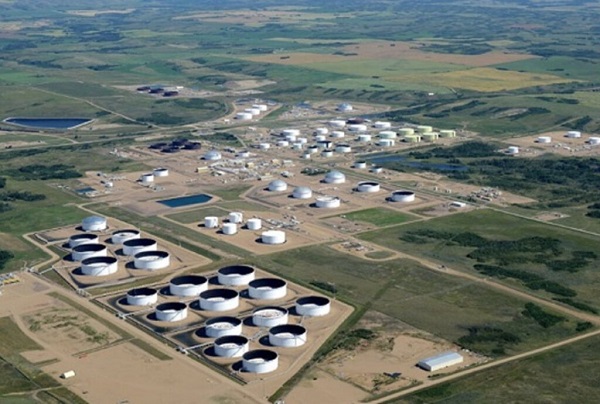
From Pierre Poilievre
Business
Why it’s time to repeal the oil tanker ban on B.C.’s north coast
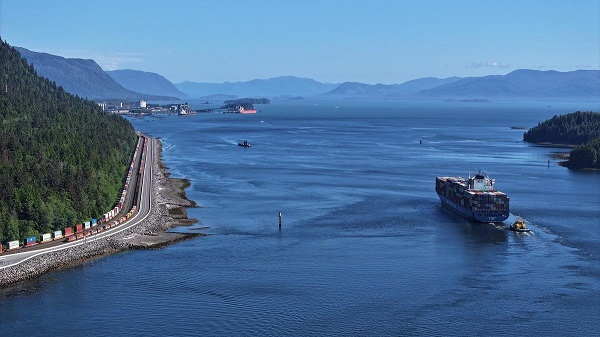
The Port of Prince Rupert on the north coast of British Columbia. Photo courtesy Prince Rupert Port Authority
From the Canadian Energy Centre
By Will Gibson
Moratorium does little to improve marine safety while sending the wrong message to energy investors
In 2019, Martha Hall Findlay, then-CEO of the Canada West Foundation, penned a strongly worded op-ed in the Globe and Mail calling the federal ban of oil tankers on B.C.’s northern coast “un-Canadian.”
Six years later, her opinion hasn’t changed.
“It was bad legislation and the government should get rid of it,” said Hall Findlay, now director of the University of Calgary’s School of Public Policy.
The moratorium, known as Bill C-48, banned vessels carrying more than 12,500 tonnes of oil from accessing northern B.C. ports.
Targeting products from one sector in one area does little to achieve the goal of overall improved marine transport safety, she said.
“There are risks associated with any kind of transportation with any goods, and not all of them are with oil tankers. All that singling out one part of one coast did was prevent more oil and gas from being produced that could be shipped off that coast,” she said.
Hall Findlay is a former Liberal MP who served as Suncor Energy’s chief sustainability officer before taking on her role at the University of Calgary.
She sees an opportunity to remove the tanker moratorium in light of changing attitudes about resource development across Canada and a new federal government that has publicly committed to delivering nation-building energy projects.
“There’s a greater recognition in large portions of the public across the country, not just Alberta and Saskatchewan, that Canada is too dependent on the United States as the only customer for our energy products,” she said.
“There are better alternatives to C-48, such as setting aside what are called Particularly Sensitive Sea Areas, which have been established in areas such as the Great Barrier Reef and the Galapagos Islands.”
The Business Council of British Columbia, which represents more than 200 companies, post-secondary institutions and industry associations, echoes Hall Findlay’s call for the tanker ban to be repealed.
“Comparable shipments face no such restrictions on the East Coast,” said Denise Mullen, the council’s director of environment, sustainability and Indigenous relations.
“This unfair treatment reinforces Canada’s over-reliance on the U.S. market, where Canadian oil is sold at a discount, by restricting access to Asia-Pacific markets.
“This results in billions in lost government revenues and reduced private investment at a time when our economy can least afford it.”
The ban on tanker traffic specifically in northern B.C. doesn’t make sense given Canada already has strong marine safety regulations in place, Mullen said.
Notably, completion of the Trans Mountain Pipeline expansion in 2024 also doubled marine spill response capacity on Canada’s West Coast. A $170 million investment added new equipment, personnel and response bases in the Salish Sea.
“The [C-48] moratorium adds little real protection while sending a damaging message to global investors,” she said.
“This undermines the confidence needed for long-term investment in critical trade-enabling infrastructure.”
Indigenous Resource Network executive director John Desjarlais senses there’s an openness to revisiting the issue for Indigenous communities.
“Sentiment has changed and evolved in the past six years,” he said.
“There are still concerns and trust that needs to be built. But there’s also a recognition that in addition to environmental impacts, [there are] consequences of not doing it in terms of an economic impact as well as the cascading socio-economic impacts.”
The ban effectively killed the proposed $16-billion Eagle Spirit project, an Indigenous-led pipeline that would have shipped oil from northern Alberta to a tidewater export terminal at Prince Rupert, B.C.
“When you have Indigenous participants who want to advance these projects, the moratorium needs to be revisited,” Desjarlais said.
He notes that in the six years since the tanker ban went into effect, there are growing partnerships between B.C. First Nations and the energy industry, including the Haisla Nation’s Cedar LNG project and the Nisga’a Nation’s Ksi Lisims LNG project.
This has deepened the trust that projects can mitigate risks while providing economic reconciliation and benefits to communities, Dejarlais said.
“Industry has come leaps and bounds in terms of working with First Nations,” he said.
“They are treating the rights of the communities they work with appropriately in terms of project risk and returns.”
Hall Findlay is cautiously optimistic that the tanker ban will be replaced by more appropriate legislation.
“I’m hoping that we see the revival of a federal government that brings pragmatism to governing the country,” she said.
“Repealing C-48 would be a sign of that happening.”
-

 Business1 day ago
Business1 day agoRFK Jr. says Hep B vaccine is linked to 1,135% higher autism rate
-
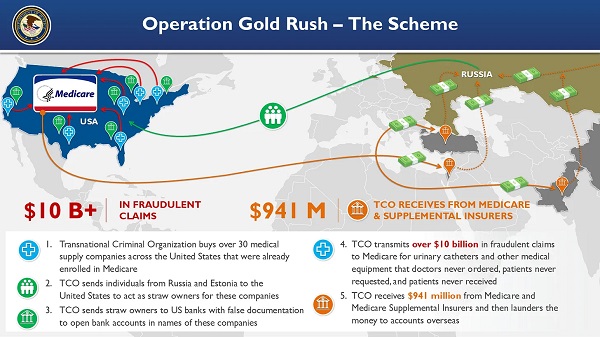
 Crime2 days ago
Crime2 days agoNational Health Care Fraud Takedown Results in 324 Defendants Charged in Connection with Over $14.6 Billion in Alleged Fraud
-

 Business14 hours ago
Business14 hours agoWhy it’s time to repeal the oil tanker ban on B.C.’s north coast
-

 Censorship Industrial Complex1 day ago
Censorship Industrial Complex1 day agoGlobal media alliance colluded with foreign nations to crush free speech in America: House report
-

 Alberta9 hours ago
Alberta9 hours agoAlberta Provincial Police – New chief of Independent Agency Police Service
-

 Health2 days ago
Health2 days agoRFK Jr. Unloads Disturbing Vaccine Secrets on Tucker—And Surprises Everyone on Trump
-

 Alberta14 hours ago
Alberta14 hours agoPierre Poilievre – Per Capita, Hardisty, Alberta Is the Most Important Little Town In Canada
-

 Business1 day ago
Business1 day agoElon Musk slams Trump’s ‘Big Beautiful Bill,’ calls for new political party

